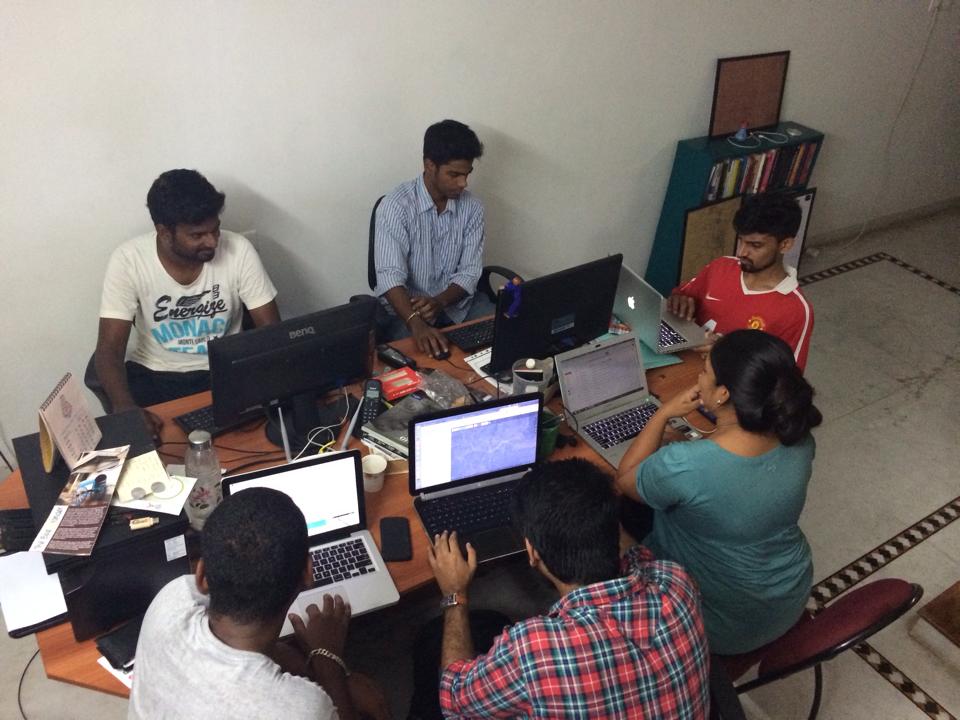Nepal Earthquake Relief – What Can You Do?
[shareaholic app=”share_buttons” id=”16224490″]
- STAY CALM: This applies irrespective of where you are. This isn’t a time to have an adrenalin rush. Seeing all those sufferings, we are tempted to get into action to support fellow human beings. It’s natural. But stay put. Get a sense of what’s going on. Especially as we are not in the ground, let the dust settle down. Unless you aren’t going to be parachuted for your rescuing skill, this is better.
- OBSERVE: Search for news beyond your TV or even Google. Use Social Media tools like Facebook, Twitter and Pinterest to follow events. Look for trending #hashtags that are focused on areas, events, issues. #NepalEarthQuake might give better results than #PrayforNepal.
- FOCUS: You might want to save the world. But FOCUS. Take up small responsibilities. If it’s done thoroughly, the impact it creates both in short term and long term is more powerful than doing twenty thousand things at a time. You might be spreading far too thin! Good at writing? Just do that. Spread the word.
- DON’T UNDERESTIMATE :You will be surprised to know what’s possible from a distance. Join Open Street Map community. Hundreds of volunteers are burning midnight oil trying to map buildings, camps, streets in disaster zone. It takes 15 minutes to learn ‘How to Map’ . This can be done from your home in Toronto or in an office in Bangalore.

Volunteers mapping roads in Nepal sitting at The Blue Yonder office in Pondicherry
- APPLY COMMON SENSE: Might sound silly, but most of us sound stupid when it comes to our responses on social media. We might have been there, there might be a connection and ‘need’ to tell the world, “We have been there”. Facebook has a powerful app called ‘Facebook Safety Check’ for Disasters. Unfortunately, people sitting in Seattle are signing in to let the world know that they are safe! As this Guardian article says, “It’s not about you!”
- IT’S THE LOCAL: Nothing like first hand information. Connect to local people, community, organisations. Check facts! You will be surprised! Don’t know anyone? Search online! You might find guys like Kathmandu Living Labs!
- IT’S NOT ONLY THE LOCAL: Remember, they are literally in the middle of a disaster zone. Emotions fly high. They are seeing devastation, death and lives in tatters. Cross check, use references before plunging into an action. Emotions could cloud their judgement as much as it does to our judgement. Apply commonsense!
- DON’T SEND A THING: Unless asked for by a trusted source locally or a proven agency stay calm. Tonnes of canned tuna collected by a well meaning group sent to a predominantly vegetarian community was a joke during Gujarat Earthquake. Don’t send containers after containers of over-sized Jeans to a community that wear only traditional clothes! Thank You!
- VOLUNTEERING: Please stay home if you don’t have a particular skill. A well-meaning volunteer with no specific skills is NOT a well-meaning volunteer at all. You would only add to the mayhem. You don’t want to be a disaster the locals end up having to manage! It might be less adventurous not to travel to an exotic country like Nepal, kindly stay put. Read more on this topic.
- PEOPLE ARE CHOOSY: Yes, even during a disaster. Saying no to cold and packed food isn’t because they don’t appreciate what you do. In most Asian countries, we prefer food warm! This is why Sardarji’s always run to a disaster zone with kitchen facilities. Their community kitchens are the most practical and they serve with dignity.
- THINK BEYOND: Yes. Think beyond regular suspects. There’s a world beyond FEMA, USAID, DFID and OXFAM. Reach out to a local Tour Operator or a Travel company in your country that has good network in disaster zone. They probably know what to do better than any Government would know. First responders for 2009 Cyclone Aila weren’t Government agencies, but a bunch of local Tour operators like HELPTourism with support from their partners globally. Check out companies like local companies like Social Tours or International organisations like Intrepid Foundation. Intrepid matches your contribution! For those in Europe, check out Ethical Travel Portal, who has many partners over the last decade.
- MONEY, MONEY AND MONEY: After all the above, if you still don’t have a clue what to do, send money. Indeed to an organisation with proven track records. By end of the day, the cost of reconstruction and rehabilitation needs a stronger economy. Nepal might need more than 5 Billion USD according to reports! Sending buckets, tents and tarpaulins from Oxfordshire warehouse in the UK might not be the best solution when these easily available purchases here can boost the local economy.
If you are looking for ways to help out but aren’t sure what to do, please feel free to reach out to us at welcome@theblueyonder.com . We’re currently volunteering to add mapping information using Open Source tools to help aid in-field rescue operations. It isn’t very complicated, and anybody with access to a laptop/tablet + internet can contribute. Happy to host short 30 minute training sessions for those interested!
[mashshare]
Let me know how I can help
Tom, Thank YOU !
Please check this link which tells you how to get involved in the Open Street Mapping
http://theblueyonder.com/blog/how-you-can-help-out-nepal-earthquake-relief/